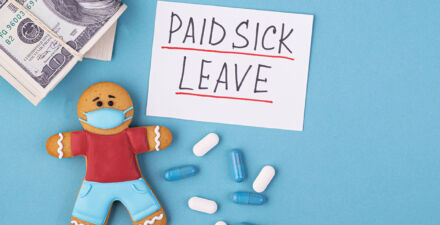Railway negotiations highlight the importance of paid sick time for U.S. workers and the broader economy

The U.S. Congress this week is considering legislation imposing a new contract on U.S. railroad workers to avert a potential strike following a breakdown in negotiations between several of the nation’s railroad unions and U.S. railroad companies. At the heart of these negotiations is workers’ access to paid sick time.
U.S. railway companies currently provide workers with zero days of paid sick time while union negotiators have been requesting 15 days. Previous negotiations, which several unions voted to reject, offered just one additional personal day. Congress is considering adding 7 days of paid sick time to the package, with the U.S. House of Representatives voting in favor of 7 days (alongside a companion bill with zero days). The House legislation is now before the U.S. Senate.
The request for paid sick time makes sense. Paid sick time not only supports the health and economic well-being of workers but also the economic situation of their employers and the broader economy.
Paid sick time is typically used when a worker experiences an illness or injury that lasts a short time or when a worker needs to address a short-term care need of a loved one. Unlike all economically comparable nations, there is no national guarantee to paid sick time in the United States, but it is a relatively common benefit for U.S. workers. In 2021, 77 percent of all private industry workers had access to paid sick time, including 87 percent of unionized workers and 73 percent of workers employed at transportation and material moving firms.
Rather than asking for an overly generous concession, U.S. railroad workers lacking any paid sick days are actually an outlier among their peers.
For U.S. workers and their families, paid sick time is about a basic right to rest or recovery from an injury or illness without sacrificing critical paychecks. Research shows that workers with paid sick time are better able to manage their own health needs, reducing costly hospital visits and, ultimately, mortality across a range of health issues. And by making it easier to stay home when sick, paid sick time reduces the instances of workers showing up to work while sick and spreading contagious viruses, such as influenza or COVID-19.
The primary purpose of paid sick time is to allow workers to address short-term medical needs without suffering economic hardship, including losing their job for taking off too much time, but the broad economic and public health benefits cannot be overlooked. Local paid sick-time laws, for example, reduce influenza-like infections by 30 percent to 40 percent. And amid the ongoing COVID-19 pandemic, sick leave is an essential tool for controlling communicable diseases and ensuring that workers are able to produce and transport goods and services and that consumers can purchase those goods and services—in other words, to ensuring that large parts of the U.S. economy can function normally.
The benefits of better health and economic security for workers are clear, but a happier and more productive workforce also benefits firms, too, making paid sick time a win-win policy for all involved. Paid sick leave is frequently found to reduce costly presenteeism, when workers show up to work while sick, and resulting in productivity losses. And, rather than increasing rates of absenteeism—when employees call out of their regularly scheduled shifts—paid sick time can slow the spread of illness in a workplace an ultimately reduce infection-related absences, potentially saving U.S. employers billions of dollars.
U.S. workers with paid sick leave also experience fewer occupational injuries. This means workers can avoid potentially disastrous impacts on their well-being and economic security, which in turn can expose their employers to expensive liabilities.
The costs associated with a sick and dissatisfied workforce are high. In addition to absences and productivity losses, low job quality due to erratic work schedules and limited benefits that are currently experienced by U.S. railroad workers, can translate to expensive turnover, particularly in a tight labor market. And these costs pale in comparison to that of a drawn-out workers’ strike on a critical component of the nation’s supply chain.
The good news is that railroad companies can avoid this disaster with low-cost, high-reward paid sick time benefits. For the workers that kept the nation’s supply chain functioning during the uncertainty COVID-19 pandemic, such an investment makes good economic sense for all involved.







